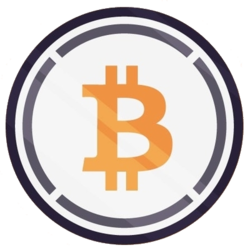Forex trading, or foreign exchange trading, is a popular investment activity worldwide. Scandinavian countries, known for their strong economies and stable financial systems, provide a unique landscape for forex traders. This article explores the regulatory environment, the benefits, and the challenges of forex trading in Scandinavian countries—Sweden, Denmark, Norway, and Finland.
Regulatory Environment
One of the most significant aspects of forex trading in Scandinavia is the robust regulatory framework. Each country has its own financial regulatory authority that oversees forex trading activities:
- Sweden: The Swedish Financial Supervisory Authority (Finansinspektionen) regulates financial markets and participants, ensuring that forex brokers operate fairly and transparently.
- Denmark: The Danish Financial Supervisory Authority (Finanstilsynet) is responsible for financial regulation, including forex trading, to protect investors and maintain market integrity.
- Norway: The Financial Supervisory Authority of Norway (Finanstilsynet) oversees financial markets, ensuring that forex brokers comply with strict regulatory standards.
- Finland: The Financial Supervisory Authority (Finanssivalvonta) in Finland supervises the financial market, including forex trading, to ensure stability and investor protection.
These regulatory bodies impose stringent rules on forex brokers, including capital requirements, reporting standards, and client fund protection measures. This rigorous oversight helps to create a secure trading environment, which is attractive to both local and international investors.
Benefits of Forex Trading in Scandinavia
There are several advantages to engaging in forex trading in Scandinavian countries:
- Economic Stability: Scandinavian economies are among the most stable in the world. With strong GDP growth, low inflation rates, and high standards of living, these countries offer a reliable economic environment for forex traders.
- Advanced Technology: The region is known for its technological advancements and high internet penetration rates. This provides forex traders with access to state-of-the-art trading platforms and tools, ensuring efficient and effective trading activities.
- Regulatory Security: As mentioned earlier, the stringent regulatory frameworks in Scandinavian countries protect traders from fraudulent activities and ensure market fairness. This high level of security makes these markets very appealing to forex traders.
- Educated Population: The high level of education and financial literacy in Scandinavian countries means that traders are generally well-informed about the risks and rewards of forex trading. This contributes to a more sophisticated trading environment.
Challenges of Forex Trading in Scandinavia
Despite the many benefits, there are also challenges associated with forex trading in Scandinavia:
- High Taxes: Scandinavian countries are known for their high tax rates. Profits from forex trading are subject to capital gains tax, which can be relatively high compared to other regions. This can reduce the overall profitability of forex trading.
- Regulatory Restrictions: While the regulatory environment provides security, it can also be restrictive. For example, there are limits on leverage, which can affect trading strategies and potential returns.
- Market Size: The forex market in Scandinavian countries, while stable, is relatively small compared to major global financial centers like London or New York. This can affect liquidity and the availability of certain currency pairs.
- Currency Volatility: Scandinavian currencies, such as the Swedish krona (SEK), Danish krone (DKK), and Norwegian krone (NOK), can be subject to volatility due to factors such as changes in oil prices and economic policies. Traders need to be aware of these risks and manage their portfolios accordingly.
Conclusion
Forex trading in Scandinavian countries offers a blend of stability, advanced technology, and regulatory security, making it an attractive option for traders. However, challenges such as high taxes, regulatory restrictions, and market size need to be considered. Overall, with careful planning and risk management, forex trading in Scandinavia can be a rewarding endeavor. As always, traders should stay informed about market conditions and regulatory changes to navigate the forex landscape effectively.
 Anasayfa
Anasayfa Canlı Borsa
Canlı Borsa Borsa
Borsa Döviz Kurları
Döviz Kurları Altın
Altın Hisse Senetleri
Hisse Senetleri Endeksler
Endeksler Döviz Hesaplama
Döviz Hesaplama Döviz Çevirici
Döviz Çevirici Kredi Arama
Kredi Arama




































































































